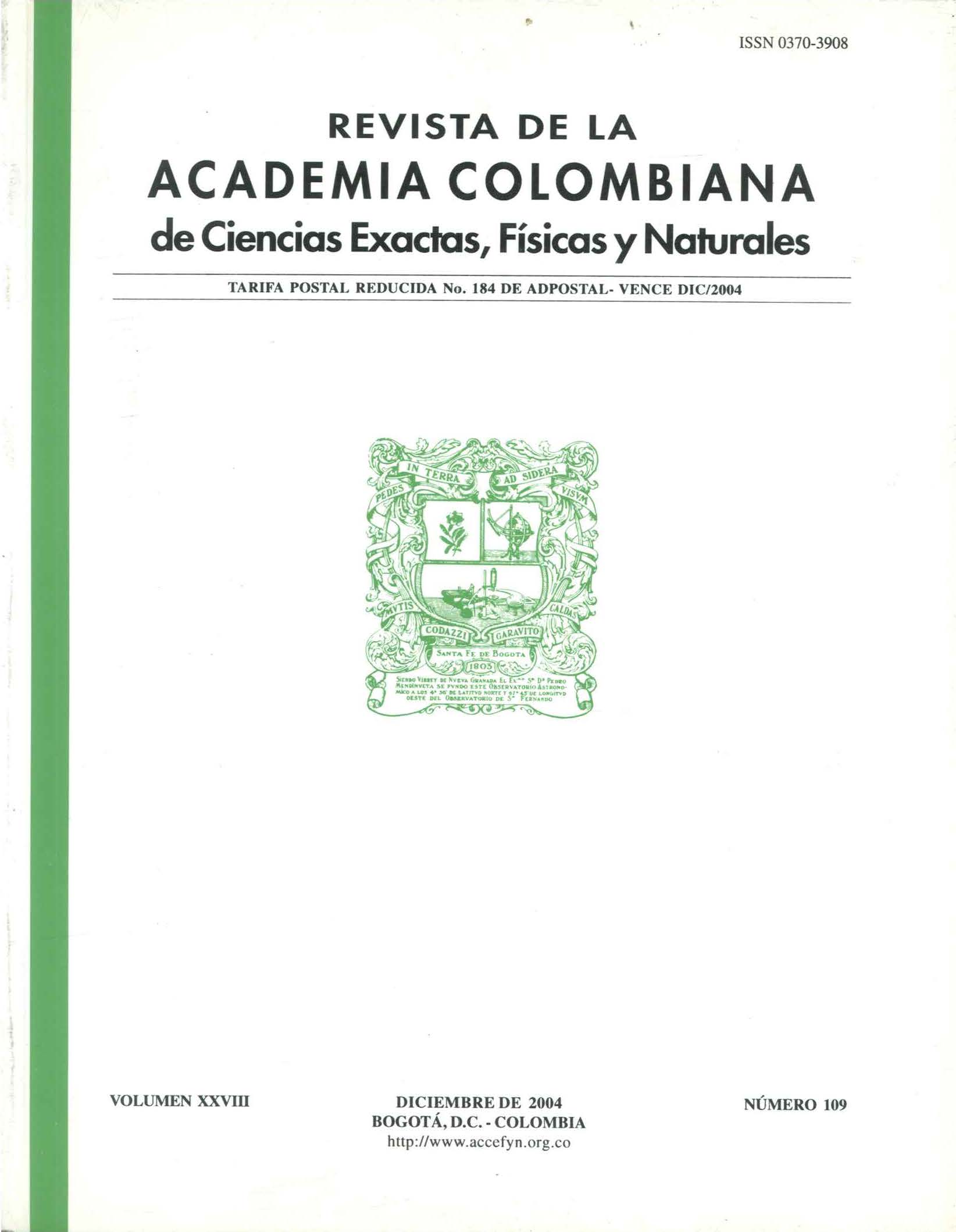Abstract
The development of genetic manipulation techniques has become an important tool for conventional crop breeding programs, especially where the required genes for breeding are limited. The commercialization and worldwide use of transgenic plants has been expanding since their approval for liberation in 1994, showing several benefits for the farmers as well as for the environment. This paper presents the general context of crop genetic manipulation, an example of developments in Colombia in genetic transformation of Passiflora edulis for virus resistance, and finally it refers to Biosafety issues.
Keywords
References
ABSP . Agricultural Biotechnology Support Project II. 2004. Genetically Engineered Organisms. Public Issues Education Project. www.geo.pie.cornell.edu Agbios - Agriculture & Biotechnology Strategies, Inc. 2002. Essential
Biosafety. A comprehensive source of scientific and regulatory information. CD-ROM 2nd Edition. Arthur, C. 2003. Report finds GM crops are good for environment. http://www. checkbiotech.org
Baulcombe, D.C. 1996. Mechanisms of pathogen-derived resistance to viruses in transgenic plants. Plant Cell 8, 1833-1844.
Beachy RN, S. Loesch-Fries and N.E. Tumer. 1990 Coat proteinmediated resistance against virus infection. Annu. Rev. Phytopathol. 28, 451-474.
Beachy RN. 1997. Mechanisms and applications of pathogen-derived resistance in transgenic plants. Curr. Opin. Biotechnol. 8, 215-220.
Benscher D., S.S. Pappu, C.L. Niblett, F. Varon de Agudelo , F. Morales, E. Hodson, E. Alvarez, O. Acosta and R.F. Lee. 1996 A strain of Soybean Mosaic Virus infecting Passiflora spp. in Colombia. Plant Dis. 80, 258-262.
Birch RG. 1997. Plant Transformation: Problems and strategies for practical application. Annu. Rev. Plant Physiol. Plant Mol. Biol. 48, 297-326.
Bryant, P.J. 2001. Biodiversity and conservation. A hypertext book. School of Biological Sciences, University of California, Irvine, U.S.A. http://darwin.bio.uci.edu/-sustain/bio65
Cancino-Escalante O y E. Hodson-de-Jaramillo 1994 Cultivo de tejidos y micropropagación en maracuyá Passiflora edulis var flavicarpa Degener. Revista Tablero 47, 81-83.
Chrispeels, M.J. and D.E. Sadava. 2003. Plants, Genes and Crop Biotechnology. Second Edition. American Society of Plant Biologists ans the ASPB Education Foundation. Jones and Bartlett Publishers, Salisbury, Massachusetts, U.S.A.
Dale, P.J., B. Clarke and E.M.G. Fontes. 2002. Potential for the environmental impact of transgenic crops. Nature Biotechnology 20, 567-574.
Daniell, H. 1999. Environmentally friendly approaches to genetic engineering. In Vitro Cell. Dev. Biol.-Plant 35, 361-368.
Daniell, H., M.S. Khan and L. Allison. 2002. Milestones in chloroplast genetic engineering: an environmentally friendly era in biotechnology. TRENDS in Plant Science. 7, 84-91
Fagard, M. and H. Baucheret. 2000. (Trans)Gene silencing in plants: How many mechanisms? Annu. Rev. Plant Physiol. Plant Mol. Biol. 51, 167-194.
Green, D. 2002. GM crops could save endangered birds. http://www.checkbiotech.org
Hodson de Jaramillo, E. 1999. Agrobacterium-mediated transformation of Passiflora edulis for Potyvirus resistance. Ph.D. Thesis, University of Nottingham.
James, C. 2003. Preview: Global Status of Commercialized Transgenic Crops: 2002. ISAAA Briefs No. 30: ISAAA Ithaca, N.Y. www.isaaa.org
Kirby A. 1999. GM crop can help environment. http://www.biotechinfo.net
Nill, K. 2002. Let the facts speak for themselves: The contribution of agricultural crop biotechnology to American farming. American Soybean Association, St. Louis, MO. Interim Report 16 September 2002. http://www.tomorrowsbounty.org/libraryprepubvs91502a.htm
NRC-CEI National Research Council Committee on Environmental Impacts. 2002. Environmental Effects of Transgenic Plants. National Academy Press, Washington, D.C.
NU- Naciones Unidas. 2003. Efectos de las nuevas biotecnologías, prestando particular atención al desarrollo sostenible, incluida la seguridad alimentaria, la salud y la productividad económica. Informe del Secretario General. 58º periodo de Sesiones de la Asamblea General. Documento A/58/76.
Pappu, S.S., R. Brand, H.R. Pappu, E.P. Rybicki, K.H. Gough M.J. Frenkel and C.L. Niblett. 1993 A polymerase chain reaction method adapted for selective amplification and cloning of 3 sequences of Potyviral genomes: application to Dasheen Mosaic Virus. J. Virol. Methods 41, 9-20.
Sambrook, J., E.F. Fritsch and T. Maniatis. 1989. Molecular Cloning: A Laboratory Manual. 2 nd Ed. Cold Spring Harbor Laboratory Press, Cold Spring Harbor, New York, USA.
Sanford, J.C. and S.A. Johnston. 1985 The concept of parasite derived resistance-deriving resistance genes from the parasites own genome. J. Theor. Biol. 113, 395-405
Tepfer, M. 2002. Risk assessmento of virus-resistant transgenic plants. Annu. Rev. Phytopatol. 40, 467-491.
Traynor P.L., R. Frederick and M. Koch. 2002. Biosafety and Risk Assessment in Agricultural Biotechnology (A Workbook for Technical Training). The Agricultural Biotechnology Support Project, Institute of International Agriculture, Michigan State University, USA.
van de Boogaart, T., G.P. Lomonosoff and J.W. Davies. 1998. Can we explain RNA-mediated virus-resistance by homology dependent gene silencing? Mol. Plant-Microbe Interact. 11, 717-723.
Varón de Agudelo, F., M. Castaño, J.A. Arroyave, A.C. Velasco, C. Vuillaume y F.J. Morales. 1992 Complejo viral que afecta plantaciones de maracuyá. (Passiflora edulis Sims.) en el Valle del Cauca. Fruits 47, 321-329.
Vasil, I.K. 1999. Plant biotechnology: Achievements and opportunities at the threshold of the 21 st century. En: Plant Biotechnology and In Vitro Biology in the 21 st Century. Altman et al. (Eds). Kluwer Academic Publishers, The Netherlands.
Waterhouse, P.M., H.W. Graham and M.B. Wang. 1998. Virus resistance and gene silencing in plants can be induced by simultaneous expression of sense and antisense RNA. Proc. Nat. Acad. Sci. USA. 95, 13959-13964.
Wright, S. 2003. GM cotton may cut pesticides. http://checkbiotech.org
Zupan, J.R. and P. Zambryski. 1997. The Agrobacterium DNA transfer complex. Crit. Rev. Plant. Sci. 16, 279-295.

This work is licensed under a Creative Commons Attribution-NonCommercial-NoDerivatives 4.0 International License.
Copyright (c) 2023 Revista de la Academia Colombiana de Ciencias Exactas, Físicas y Naturales





